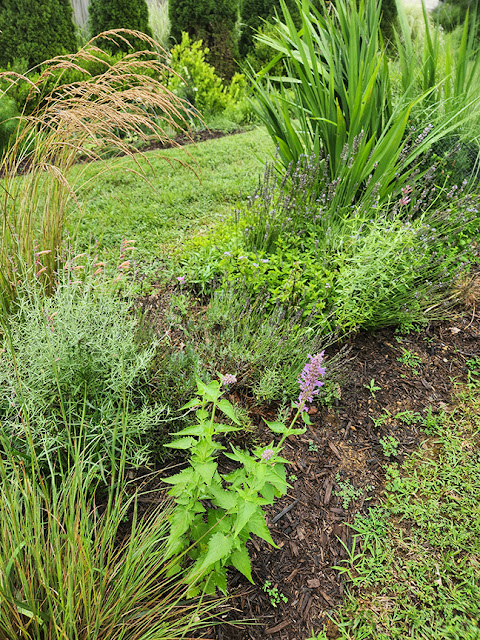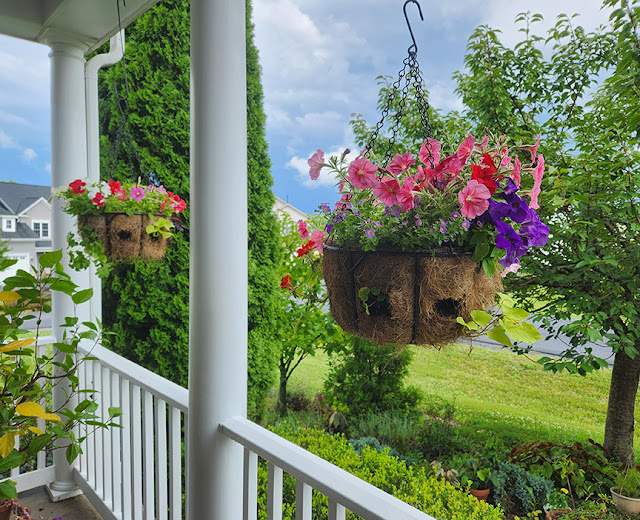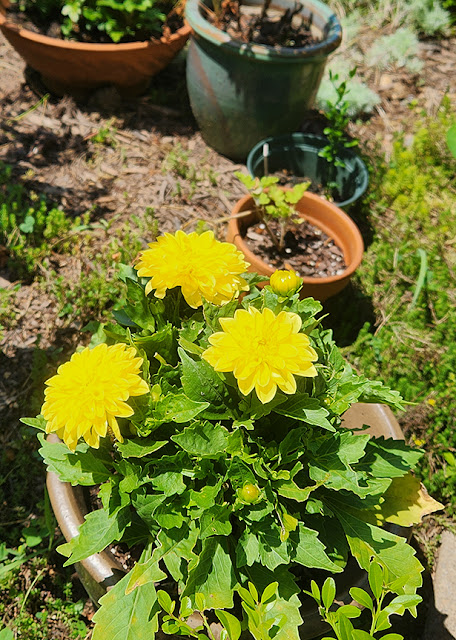 |
| Pink Petunia |
It's November Bloom Day: the day when we garden bloggers share what is blooming in our gardens on the 15th of each month, hosted by Carol Michel's May Dreams Garden blog. Now that the overnight temperatures in our area are dropping, there is less in bloom in my Zone 6B Virginia garden, as is to be expected.
Most of my tender tropical plants have been brought indoors for overwintering, only a few linger on the porch to take advantage of its shelter. Above is the pink Petunia that wouldn't die--it seems to me that these end-of-the-season flowers are larger than those earlier in the summer, and the color more vivid--a last hurrah, so to speak. As an annual, it will be left on the porch to die.
The Datura 'Purple Ballerina', another annual I acquired rather late in the season, I hope to keep alive indoors for next summer, but it may not make it. In the meantime, I bring it in overnight and take it out on the porch on sunny days, and it has put out a few of its lovely flowers.
 |
| Datura 'Purple Ballerina' |
I acquired another goldenrod, a Zigzag variety (Solidago flexicaulis) on a recent trip to Maryland's Eastern Shore, and while it was awaiting planting in my garden, is blooming on the porch.
 |
| Zigzag goldenrod (Solidago flexicaulis) |
Other than these, there is little bloom left outdoors now. About a week ago the autumn-flowering Crocus speciosus I planted in early October were in bloom, but those have gone, leaving only vestiges. I think the colors of this combination by the front entrance are very seasonal: purple mums persisting in pots along with the flowers of Irish Moss (Sagina subulata) and the colorful foliage of a dwarf Nandina with dried Gladiolus foliage.
 |
| Irish moss and mums in pots by the front entrance. |
My Viburnum 'Brandywine' has now lost most of its leaves, only clusters of blue berries hang on the bare branches. The Winterberries (Gaultheria) recovered enough from last winter's deer damage over the summer, and produced a few berries. I'll have to try brewing some winterberry tea with them.
 |
| Berries of Viburnum 'Brandywine' |
 |
| Gaultheria 'Fiesta' |
The leaves have come down from most of the trees in the woods out back, the ones that persist are not as colorful as they were two weeks ago, when they were at their peak.The mild weather has allowed me to continue my project of expanding and consolidating Herb's bed with the bed along the veggie garden enclosure, where I've planted more herbs. Only a few more linear feet to dig--hopefully I'll have time to finish it before the ground freezes hard.
 |
| Expansion of flower beds and new mulch path. |
The native Witch Hazel trees in the back woods are in bloom--I can't take any credit for these, a cluster of several trees was there when we bought the house. The two Witch Hazels I planted in my garden open their blooms in early spring and the species, Hamamelis vernalis, is different. My other witch hazel tree is the hybrid, 'Diane.'
 |
| Native Witch Hazel trees (Hamamelis virginiana) in bloom. |
The Beautyberries are still holding on to their berries--all these subdued shades blend so well with the surrounding dried leaves to make wonderful combinations!
 |
| Beautyberries (Callicarpa dichotoma) |
 |
| Dried Hydrangea flowers and Shasta daisies. |
Blooms from my indoor garden will soon be taking the place of the outdoors as winter overtakes us. The yellow hibiscus is one of my indoor favorites. I brought in the Pelargonium I had outdoors and it put forth another round of blooms.
 |
| Yellow Hibiscus |
 |
| Pink Pelargonium |
Both my Bearss lime trees began to bloom once I brought them inside the house--the older tree is covered with flowers and setting fruit. The Meyer lemon is barely surviving--I can't imagine why there would be such a marked difference between the two varieties of citrus growing in the same environment, with the same potting soil.
 |
| Bearss lime blossoms. |
That's all for today, folks, thanks for visiting!









































